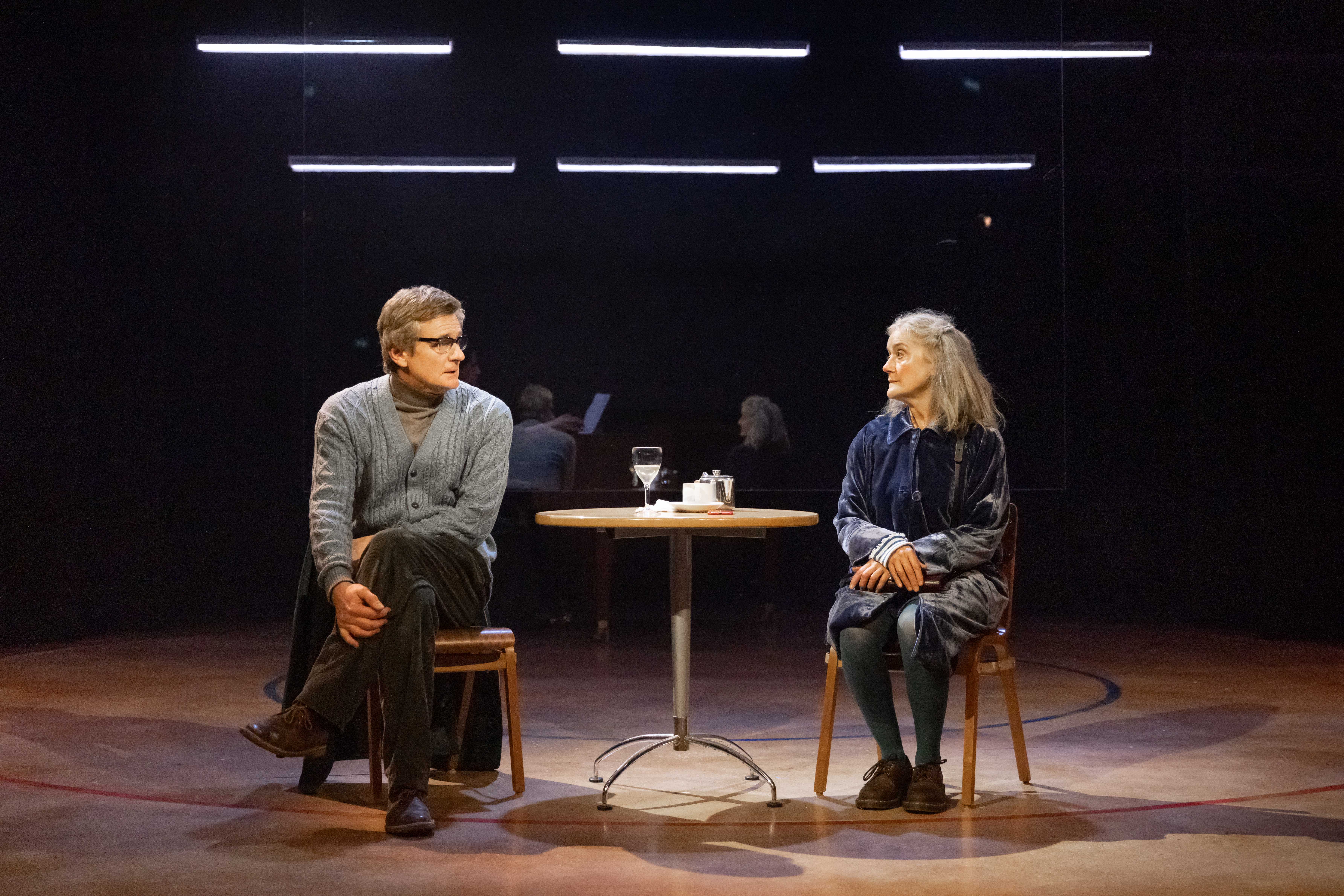The Ballad of Hattie and James review: A sweeping symphony of sexual identity and music
Sophie Thompson and Charles Edwards deliver wonderful performances in a story of musical prodigies with ‘One Day’ vibes

From a tune played on one of those annoying pianos at St Pancras station, Samuel Adamson spins out a beautiful epic in miniature, following the lives of a boy and a girl, musical prodigies Hattie and James.
But as with his previous hit Wife, seen at the Kiln in 2019 and similarly playing out across decades, Adamson makes this far more than just another love story. For one thing, Hattie and James are both gay, and for another, he turns the story – like Wife – into a big sweeping symphony of sexual identity and music.
There are One Day vibes here: we drop in on the couple at their few meetings decades apart, starting at a school production of Benjamin Britten’s Noye’s Fludde in 1976 and ending, well, a long time later. Their relationship is lived staccato: they only meet a handful of times, but their impact on each other is profound.
Adamson writes brilliant dialogue. Hattie and James are fantastic creations, of-a-type enough that there’s something to latch onto – he the Britten-loving priggish goody goody, she the Fanny Mendelssohn nut with wild hair and a bottle of vodka – but also completely unique.
Sophie Thompson and Charles Edwards play the duo at all ages. It’s amazing to see the way they spin around each other during these long scenes, like magnets, sometimes attracting and sometimes repelling. They love each other very deeply and are driven by the same impulses – devotion, jealousy, a need to seek forgiveness – but never seem able to deploy the same feelings at the same time. So they argue. And hurt each other.
And Edwards and Thompson capture it all wonderfully. You only need to look at their silhouettes to understand their characters: he’s a straight line, a sharpened pencil, in his green cords and cardigan. She’s like a scribble, a jumble of shapes, stooped and staggering, with wide eyes and gaping mouth. Where Edwards delivers every line in strict tempo and with utter precision, Thompson brings a rubato quality. You never quite know what she’ll say or how she’ll say it.
Director Richard Twyman keeps things relatively simple staging-wise. There’s a grand piano, played elegantly by Berrak Dyer – with beautiful compositions by Nicola T Chang and David Shrubsole – and a revolve which takes us from school hall to café to train station with minimal fuss. Jon Bausor’s unadorned set of bright wood panels gives the feel of a contemporary concert hall.
I’m sure there’s a clever musical metaphor here somewhere about Adamson’s script, but basically it’s really good, really funny and really smart. Little motifs repeat throughout, both musical ones and linguistic ones. Each time we go back in time we learn a bit more, these thematic layers – sexuality, honesty, artistry, memory – building up each time. Maybe it’s a little too long, and over explains in some scenes, but if the pianos at St Pancras can spark a story like this then maybe they’re not so bad after all.
Kiln Theatre, until 18 May



Join our commenting forum
Join thought-provoking conversations, follow other Independent readers and see their replies
Comments